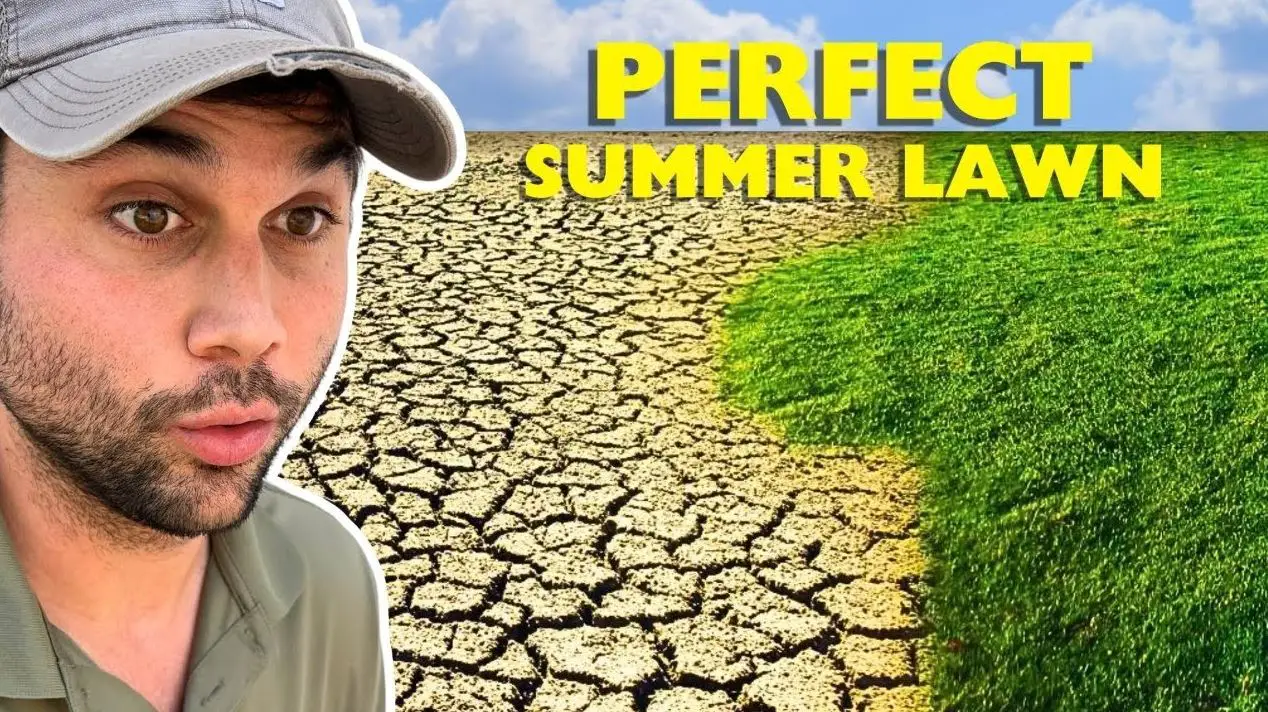This summer you will want your lawn to look its best. However, there are some essential rules that I follow to keep my grass healthy and vibrant when the summer heat comes and threatens to destroy my lawn.
Today, I will discuss the key points from my Youtube video titled “Four Things You Should NEVER Do in Your Lawn in the Summer.” My expert insights will help you maintain a lush, green lawn all summer long.
Keeping your lawn in top shape during the summer involves a few key strategies.
- Water your lawn deeply and infrequently to encourage strong root growth.
- Avoid the temptation to mow your grass too short; instead, maintain a higher mowing height to protect your lawn from the harsh summer sun.
- Don’t forget to fertilize your lawn, as it still needs nutrients to thrive during this season.
- Be cautious about heavy foot traffic and take steps to protect your grass in areas prone to high use.
Proper Lawn Watering During Summer Months
One of the most crucial aspects of summer lawn care is watering. Contrary to popular belief, I advise against daily watering, as it can be detrimental to your turf and its roots.
Instead, I opt for deep and infrequent watering. Here’s why: frequent shallow watering promotes shallow root growth, leaving your lawn more vulnerable to drought and heat stress. By watering deeply once a week, you encourage your grass to develop deep, strong roots that can access water stored in the soil.
Deeper roots produce thicker, healthier, happier grasses that will be durable throughout the summer and prevent invasive grass and weed growth.
Mow High, Not Low During Summer Heat
While you might be tempted to give your lawn a close cut during the summer, this is a mistake. Mowing your lawn too short can put significant stress on your grass, making it more susceptible to damage from the sun and pests.
I recommend mowing your grass at a higher setting on your lawn mower. This keeps the grass blades longer, providing more shade to the soil and roots while helping to retain moisture. Taller grass also helps inhibit weed growth, as it competes more effectively for sunlight.
If you have bermudagrass or other warm season grasses, you still want to mow higher than you might think even though these require shorter cuts than cool season grasses.
Don’t Skip Fertilization in the Summer
Summer is not the time to neglect your lawn’s nutritional needs. Fertilization is crucial even during the warmer months. I always emphasize the importance of feeding your lawn.
Properly timed and balanced fertilization ensures that your grass has the nutrients it needs to thrive, promoting healthy growth and vibrant green color. Make sure to use a summer-specific lawn fertilizer, as it is designed to meet the unique needs of your grass during this season.
I used to throw my hands up in frustration during the summer as it seemed like putting any type of fertilizer down was a waste. But with the proper watering schedule and appropriate fertilizer, you can make a solid green yard even on the hottest days.
Avoid Heavy Traffic in Your Lawn
Summer often means more outdoor activities, which can lead to heavy foot traffic on your lawn. While it’s fun to play games, host gatherings, or enjoy picnics in your yard, too much activity can damage your grass. I suggest being mindful of where and how you move about your lawn – while still enjoying it.
Solution: consider creating designated paths or areas for high-traffic use to minimize the wear and tear on your grass. This simple step can help preserve the health and appearance of your lawn throughout the summer.
For me, it was putting down pavers in the most worn paths of my yard that helped keep my kids off of the grass.
Final words: Keeping a healthy summer lawn
In reality, I had to learn this stuff the hard way after breaking every single one of these rules at one time or another.
By following these tips from my video, you’ll be well on your way to maintaining a beautiful, healthy lawn all summer long.
